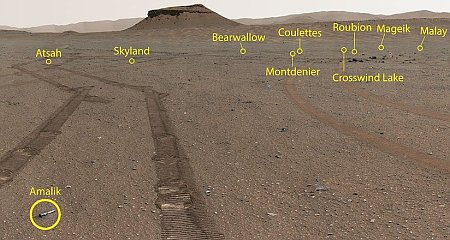Another retraction looms of research claiming the discovery of superconductivity at room temperature
A March research paper that claimed the discovery of a compound that allowed superconductivity at room temperature is now facing retraction, making it the third superconductivity paper in which physicist Ranga Dias of University of Rochester was the lead author.
On 1 September, Nature attached an editor’s note to the March paper, warning readers that “the reliability of data presented in this manuscript is currently in question.” A week later, eight of the co-authors on the 11-person paper submitted a letter to Nature requesting the study be retracted, The Wall Street Journal first reported on Tuesday. Science has obtained the letter and additional documents, which raise concerns about the reliability of the data and Dias’s treatment of his co-authors. “We respectfully request and recommend that Nature issue a retraction,” conclude the signatories, who include five recent graduate students of Dias’s.
The article at the link is worth reading, as it details at length the bullying efforts of Dias to intimidate his co-authors by threatening legal action.
Before the co-authors sent their letter to Nature, Dias sent a cease-and-desist letter to six of them—five of his former graduate students and one U of R faculty member. He warned them about the “potential legal consequences of your actions and to consider the ethical implications of making baseless allegations against a colleague and fellow scientist.” Dias has previously sent cease-and-desist letters to other critics of his work.
This is not all. It appears that Dias used his position of authority to prevent an honest appraisal of his work, actions that are in utter violation of ethics and the scientific method.
While it is good that Dias’s chickens are now coming home to roost, his corrupt behavior is unfortunately too common now in the academic world, as indicated by the increase in retractions by 13,750% since 2000.
The good news however is that these retractions are helping to clean out that corruption. Though cleaning house will take time, it does appears to be happening. For example, according to the article, absolutely no students have enrolled in any of Dias’s classes at the University of Rochester.
A March research paper that claimed the discovery of a compound that allowed superconductivity at room temperature is now facing retraction, making it the third superconductivity paper in which physicist Ranga Dias of University of Rochester was the lead author.
On 1 September, Nature attached an editor’s note to the March paper, warning readers that “the reliability of data presented in this manuscript is currently in question.” A week later, eight of the co-authors on the 11-person paper submitted a letter to Nature requesting the study be retracted, The Wall Street Journal first reported on Tuesday. Science has obtained the letter and additional documents, which raise concerns about the reliability of the data and Dias’s treatment of his co-authors. “We respectfully request and recommend that Nature issue a retraction,” conclude the signatories, who include five recent graduate students of Dias’s.
The article at the link is worth reading, as it details at length the bullying efforts of Dias to intimidate his co-authors by threatening legal action.
Before the co-authors sent their letter to Nature, Dias sent a cease-and-desist letter to six of them—five of his former graduate students and one U of R faculty member. He warned them about the “potential legal consequences of your actions and to consider the ethical implications of making baseless allegations against a colleague and fellow scientist.” Dias has previously sent cease-and-desist letters to other critics of his work.
This is not all. It appears that Dias used his position of authority to prevent an honest appraisal of his work, actions that are in utter violation of ethics and the scientific method.
While it is good that Dias’s chickens are now coming home to roost, his corrupt behavior is unfortunately too common now in the academic world, as indicated by the increase in retractions by 13,750% since 2000.
The good news however is that these retractions are helping to clean out that corruption. Though cleaning house will take time, it does appears to be happening. For example, according to the article, absolutely no students have enrolled in any of Dias’s classes at the University of Rochester.








